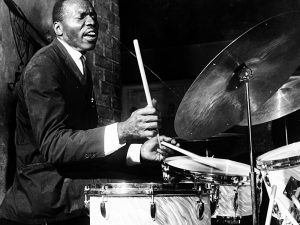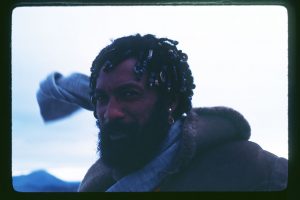Here’s a special-order cymbal which we’ll be seeing more of— a Billy Higgins tribute cymbal! A bright 22″ Medium Ride with six rivets.
For this we used a Cymbal Foundry ride— Cymbal & Gong’s series of basically clean, modern-sounding cymbals— gave it a patina, and installed six rivets, evenly spaced, 1.5″ from the edge:
At 2675 grams it’s about 325-500 grams lighter than the actual model of cymbal Higgins used, and a good deal easier to play, and integrate into a set up of jazz cymbals.
Compare the sound with Billy Higgins’s cymbal on Tears Inside, from Pat Metheny’s album Rejoicing:
Or on Don Cherry’s album Art Deco:
Look for another one of these with the next shipment from Turkey in early February! There are also 20″ and 24″ Cymbal Foundry rides on hand right now if anyone wants a similar effect in a smaller or bigger cymbal. Write us to get yours!

 A few thoughts and guidelines for selecting a great jazz ride cymbal— the same standards we apply in selecting every cymbal we sell.
A few thoughts and guidelines for selecting a great jazz ride cymbal— the same standards we apply in selecting every cymbal we sell. The great drummer, composer, and band leader Ronald Shannon Jackson is best known as a player of a giant Sonor set with Paiste cymbals in the 80s and 90s, but here he talks about the old A. and K. Zildjians he played earlier in his career, in New York in the 60s:
The great drummer, composer, and band leader Ronald Shannon Jackson is best known as a player of a giant Sonor set with Paiste cymbals in the 80s and 90s, but here he talks about the old A. and K. Zildjians he played earlier in his career, in New York in the 60s: